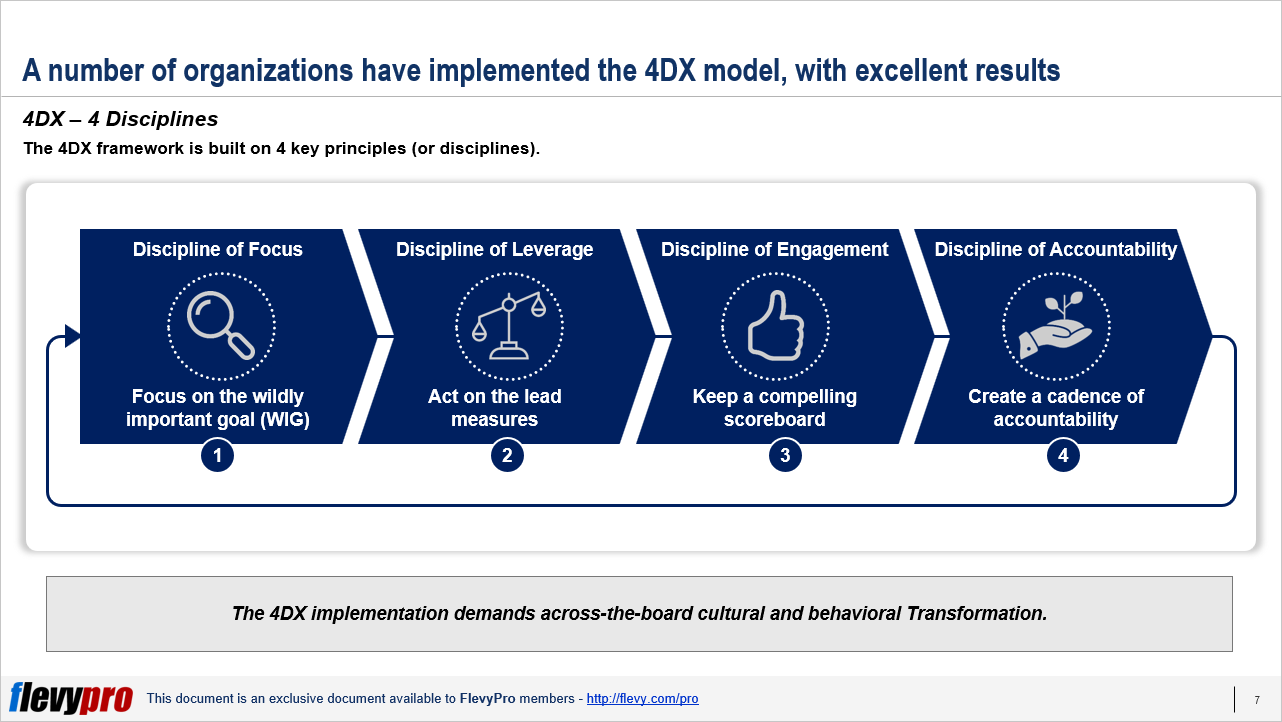Achieving high levels of productivity and consistent goal execution isn’t a matter of luck—it’s a matter of discipline. The 4 Disciplines of Execution (4DX), developed by Chris McChesney, Sean Covey, and Jim Huling, provide a clear roadmap for translating strategic goals into daily actions. In this article, we’ll break down each of the four disciplines and explore how you can apply them in your personal or professional routine to gain real, measurable results.
Understanding the Need for 4DX
Many people and organizations struggle with a common issue: they are busy, but not necessarily productive. They fall victim to what 4DX calls the “whirlwind” — the constant barrage of daily tasks and distractions that consume time and energy, leaving little room for strategic progress.
The 4 Disciplines of Execution provide a framework to rise above this whirlwind and focus on what truly matters.
Discipline 1: Focus on the Wildly Important Goal (WIG)
Most people try to do too many things at once, which dilutes their effectiveness. The first discipline urges you to narrow your focus. Instead of trying to improve everything, focus your energy on one or two goals that will make the biggest difference.
How to apply it:
- Ask yourself: “What is the one goal that, if achieved, would make all other goals easier or unnecessary?”
- Write it clearly and make sure it’s specific and measurable (e.g., “Increase monthly blog traffic by 30% in 90 days”).
- Share your WIG with anyone who needs to be aligned with it.
Tip: Keep your WIG visible—on your wall, phone, or planner—to remind you daily of what truly matters.
Discipline 2: Act on the Lead Measures
Most people only measure success after the fact (lag measures), like checking how much weight you lost or how much money you made. But you can’t control those directly. Instead, lead measures are the activities that influence those results.
Example:
- Lag measure: Increase monthly sales by 20%
- Lead measures: Make 20 sales calls per week; Publish 2 blog posts per week
How to apply it:
- Identify 1–3 lead measures that have direct impact on your WIG.
- Make sure they are actionable and within your control.
- Track them consistently (daily or weekly).
Tip: Lead measures are the most powerful habit-forming part of 4DX. They create momentum.
Discipline 3: Keep a Compelling Scoreboard
People play differently when they know the score. This discipline emphasizes the need to create a visual, engaging scoreboard that tracks both lead and lag measures.
What it should include:
- Your Wildly Important Goal
- Key lead and lag measures
- Progress updates
How to apply it:
- Use a whiteboard, spreadsheet, or digital dashboard to track your progress.
- Make it visible—this increases accountability and motivation.
- Involve others in updating and reviewing the scoreboard regularly.
Tip: Use colors and simple graphics to make the scoreboard more intuitive and visually motivating.
Discipline 4: Create a Cadence of Accountability
This is where the magic happens. Weekly accountability sessions are the engine of execution. During these sessions, individuals or teams report on their commitments, review the scoreboard, and make new commitments for the next week.
How to apply it:
- Schedule a 20–30 minute meeting each week.
- Ask: What did I commit to? Did I do it? What will I commit to next?
- Stay focused only on the WIG and lead measures during this time.
Tip: Use this time to encourage, not to blame. The focus is on progress and improvement.
Integrating 4DX Into Your Daily Life
You don’t need a team or a corporate structure to use 4DX. Here’s how you can bring these disciplines into your solo routine:
- Pick your WIG: Maybe it’s “Read 10 books in 3 months” or “Launch a personal website in 60 days.”
- Define lead measures: “Read 30 pages a day” or “Work on the website 1 hour daily.”
- Create a personal scoreboard: Use a tracker app or simple calendar system.
- Hold yourself accountable: Reflect weekly, journal your wins, or have a friend act as an accountability partner.
Common Mistakes to Avoid
Even with a great system like 4DX, mistakes can happen. Here are a few to avoid:
- Focusing on too many goals: Keep it simple.
- Tracking too many measures: Stick to the vital few.
- Lack of consistency: Discipline is about commitment over time.
- No accountability: Without a follow-up, execution fades.
Why 4DX Works When Other Methods Don’t
Many productivity methods focus on planning or time management, but not execution. The 4 Disciplines of Execution bridge this gap by turning strategy into consistent action. They create clarity, alignment, and momentum—even in chaotic environments.
Whether you’re a student, entrepreneur, freelancer, or corporate team member, 4DX can give you the edge you need to achieve more with less stress.
A New Level of Focus and Progress
Applying the 4 Disciplines of Execution doesn’t mean you’ll never get distracted or overwhelmed again—but it does mean you’ll have a clear path to get back on track. By focusing on what truly matters, measuring the right actions, tracking progress visibly, and creating consistent accountability, you’ll be amazed at how much you can accomplish in less time.
Take control of your time. Choose one Wildly Important Goal today—and start executing like never before.
